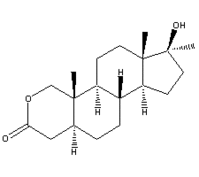As the number and proportion of older men increase in the United States and elsewhere, therapy to promote healthy aging becomes more advantageous. Aging in men has been associated with a slow decline in testosterone (T) levels as well as various clinical changes (e.g., as declining muscle mass, declining bone mineral density, and increased fat) that mimic the symptoms of androgen deficiency in younger men. Androgen supplementation is known to have positive effects on muscle mass, bone density, and strength, but longitudinal population-based studies are needed to assess its safety and benefits in older men. To shed light on these issues, Liu and associates reviewed randomized controlled trials of androgen supplementation lasting for at least three months in men older than 60 years.
Seven studies reported the effects of standard- dose androgen supplementation on muscle and fat in men with low to normal serum T levels. All seven showed a modest reduction in body fat mass and a small increase in muscle mass, although it is unclear whether such small differences would improve daily function in an older, more frail population. The potential improvement in insulin sensitivity that might be expected with a decrease in body fat was not seen, whether patients were supplemented with an aromatizable androgen (testosterone) or a nonaromatizable androgen (e.g., dihydrotestosterone, oxandrolone [Oxandrin]).
Three studies analyzed the effects of androgen therapy on bone mineral density. These studies showed that improvement in skeletal bone content in older men is more likely when a higher dose of intramuscular T is used and when the patient has a lower baseline T concentration. Another trial found that although T and nandrolone increased muscle strength, only T increased bone mineral density. Aromatizability therefore appears to be essential for bone mass improvement, which may aid in the choice of androgen used in further studies.
The effects of T supplementation on the risk of prostate cancer and symptomatic prostatic enlargement are not known; its effects on cardiovascular risks in older men are unclear and require further study. Two trials relating to sleep-disordered breathing indicate that high-dose testosterone supplementation worsens sleep apnea and polycythemia in older men; further dosing-related safety studies are needed.
The authors conclude that features of T deficiency syndrome include (1) clinical signs and symptoms such as lethargy, fatigue, diminished libido, depressed mood, reduced muscle and bone mass, increased visceral fat, impotence, and mild cognitive impairment; and (2) a total T concentration of less than 200 ng per dL (7 nmol per L). A T concentration of 200 to 400 ng per dL (7 to 14 nmol per L) could indicate androgen deficiency, but a concentration greater than 400 ng per dL excludes the diagnosis. A second confirmatory test is needed before treatment is initiated. Bioavailable T or free T tests may clarify borderline situations and may be particularly useful in older men because serum sex-hormone-binding globulin increases with age. Before treatment, physicians should determine the cause of decreased T levels (primary or secondary); perform a digital prostate examination, prostate-specific antigen blood test, and complete blood count; and consider a reduced initial dose to minimize adverse effects. Random blood T measures during treatment probably are not useful unless androgen-dependent symptoms occur. More research is needed regarding the benefit and safety of T supplementation in older men with androgen deficiency syndrome.
Liu PY, et al. The rationale, efficacy and safety of androgen therapy in older men: future research and current practice recommendations. J Clin Endo Metab October 2004;89:4789-96.
EDITOR'S NOTE: Biochemical testing is essential for an accurate diagnosis of androgen deficiency syndrome. Routine laboratory screening for hypogonadism is not recommended in patients without clinical symptoms or signs. Suspected hypogonadism can be evaluated with a total testosterone (T) assay. Free T levels may be more useful when elevated or decreased sex-hormone-binding globulin (SHBG) could alter the biologically available fraction of measured T. Obesity, type 2 diabetes, and hypothyroidism are associated with low SHBG levels, whereas older age is associated with increasing SHBG. Testing free T levels or total bioavailable T can give accurate measurements in these situations but, unfortunately, the bioavailable T levels assay is difficult to perform, and free T assays also require specialized laboratory standardizations and techniques. The most reliable assay for free T is equilibrium dialysis. Some physicians measure total T and SHBG as a compromise, allowing calculation of a Testosterone Free Index using the formula Total T/SHBG x 100; a useful calculator can be found on the Internet at http://www.issam. ch/freetesto.htm.--R.S.
The trade names of drugs listed in "POEMs and Tips from Other Journals" are the first version of the drug that was released and not necessarily the brand of drug that was used in the study being discussed.
COPYRIGHT 2005 American Academy of Family Physicians
COPYRIGHT 2005 Gale Group



